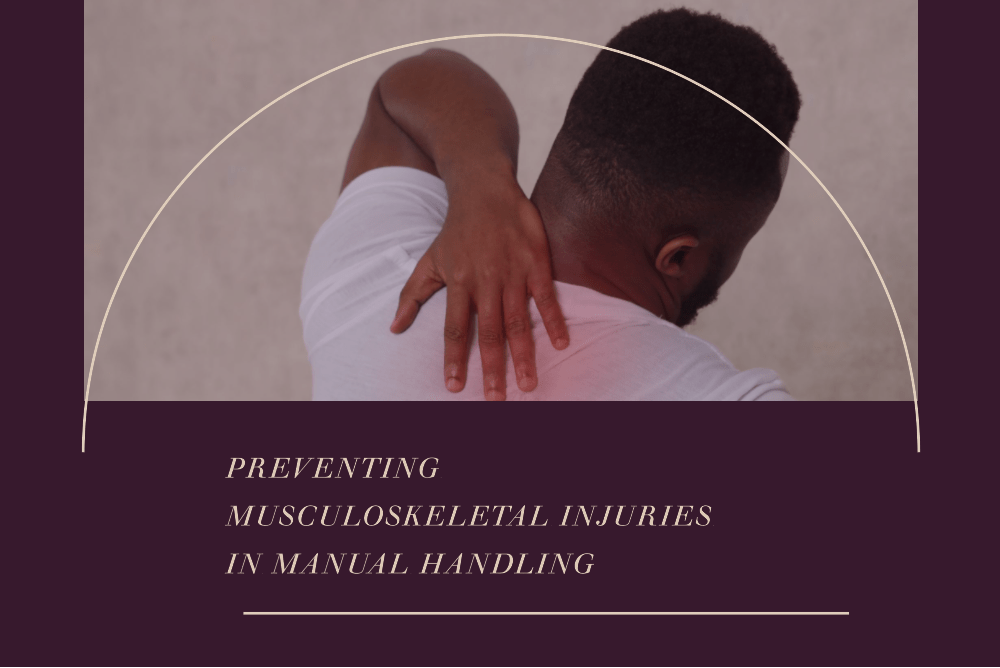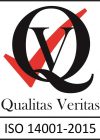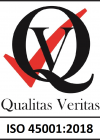In the dynamic world of modern industries, Manual Handling workplace safety stands as a paramount concern. The well-being of employees is the foundation for thriving organizations. Safeguarding workers from hazards is a proactive approach to creating a culture of care, productivity, and efficiency.
The intricate web of workplace safety encompasses multifaceted aspects, ranging from identifying potential risks to implementing comprehensive safety protocols. Diligently adhering to safety guidelines ensures a reduction in accidents, injuries, and fatalities, fostering a positive environment where employees feel valued and protected.
However, the pursuit of workplace safety is not a static endeavor. It calls for continuous adaptation to evolving technologies, industry best practices, and the unpredictable nature of risks. As technology and industry interlace, new hazards emerge, necessitating agile safety frameworks that anticipate, prevent, and mitigate potential threats.
The Impact of Musculoskeletal Injuries
A.Exploring Common Injuries and Their Consequences
Within the realm of workplace safety, musculoskeletal injuries cast a long shadow, inflicting a myriad of afflictions upon the workforce. These injuries manifest in various forms, each carrying its own set of consequences and challenges for both the individual and the organization.
- Strains and Sprains: Among the most prevalent musculoskeletal injuries are strains and sprains. These occur when muscles, tendons, or ligaments are stretched beyond their capacity or abruptly twisted, leading to excruciating pain and limited mobility. Everyday tasks become agonizing hurdles, hindering the affected worker’s ability to perform their duties optimally.
- Back Injuries: The back, an intricate network of bones and muscles, bears the brunt of manual handling tasks. Herniated discs, bulging discs, and other back injuries can result from repetitive lifting, bending, or improper postures. These injuries disrupt normal work activities and may lead to chronic pain, leaving workers physically and mentally fatigued.
- Carpal Tunnel Syndrome: Occupations involving repetitive hand movements, such as typing or assembly work, may give rise to carpal tunnel syndrome. This condition results from pressure on the median nerve, causing tingling, numbness, and weakness in the hand. As employees struggle with reduced hand dexterity, productivity takes a considerable hit.
- Tendinitis: Overuse of specific muscle groups can lead to tendinitis, causing inflammation and pain in tendons. Workers grappling with tendinitis may experience difficulties performing tasks that require repetitive motions, further complicating their ability to contribute effectively.
The consequences of these musculoskeletal injuries ripple through organizations, affecting not only the injured individual but also their colleagues and the overall work environment.
B.The Economic and Productivity Impact on Organizations
The economic ramifications of musculoskeletal injuries weigh heavily on organizations, eroding financial stability and disrupting productivity on multiple fronts.
- Healthcare Costs: Organizations bear the brunt of skyrocketing healthcare expenses related to treating musculoskeletal injuries. Medical consultations, diagnostic tests, physical therapy, and medications mount rapidly, diverting resources that could otherwise be invested in growth and innovation.
- Worker Compensation Claims: Musculoskeletal injuries often lead to worker compensation claims, entailing legal procedures and compensation payouts. The financial strain of these claims can be substantial, affecting the bottom line and the organization’s reputation.
- Reduced Productivity: As injured employees struggle to fulfill their roles efficiently, overall productivity takes a significant hit. Co-workers may need to shoulder additional responsibilities, stretching their own limits and creating a domino effect of decreased output.
- Absenteeism and Presenteeism: Musculoskeletal injuries may result in absenteeism, with injured employees unable to attend work. Conversely, some employees, determined to fulfill their duties despite pain, may show up but suffer from presenteeism – reduced productivity due to diminished physical or mental well-being.
- Workforce Morale and Turnover: Witnessing colleagues battle with musculoskeletal injuries can dampen workforce morale. A workplace that doesn’t prioritize employee health may face increased turnover as employees seek safer and more supportive environments.
o counter these detrimental effects, organizations must be proactive in implementing ergonomic interventions, safety training programs, and a culture of well-being. By investing in the health and safety of their workforce, organizations can shield themselves from the financial repercussions of musculoskeletal injuries while nurturing a more resilient and productive workforce.
Identifying Risk Factors in Manual Handling Tasks
A.Ergonomics and Work-Related Injuries
Delving into the intricate world of workplace safety, the science of ergonomics takes center stage in unraveling the enigmatic dance between manual handling tasks and work-related injuries. Ergonomics, the study of optimizing human-machine interactions, seeks to strike a harmonious balance between the capabilities of the human body and the demands of the task at hand.
In manual handling tasks, where the human body is the primary instrument, ergonomics becomes an indispensable tool in identifying risk factors that may lead to work-related injuries. It is an art of understanding how the human anatomy, physiology, and psychology interweave with the tools, equipment, and work processes utilized in daily operations.
Ergonomic evaluations scrutinize each facet of manual handling tasks, from the design of workstations and tools to the intricacies of movement and posture. By deciphering the ergonomic puzzle, safety professionals gain invaluable insights into the factors that may compromise the well-being of workers.
Proper ergonomics can significantly mitigate the risk of work-related injuries, enhancing both safety and efficiency. Adjusting workstations to accommodate different body types, providing ergonomically designed tools, and implementing rotational tasks to reduce repetitive strain all contribute to an environment where manual handling tasks are performed with reduced risk.
B.Factors Contributing to Musculoskeletal Strain
The enigmatic landscape of musculoskeletal strain hides a labyrinth of interconnected factors, confounding even the most astute safety experts. Unraveling this complexity requires peering into the intricacies of human physiology, work dynamics, and the environments in which manual handling tasks unfold.
- Biomechanics of Motion: Human movement, an orchestration of bones, muscles, and joints, can be influenced by the biomechanics of the task. Awkward postures, excessive force, and prolonged static positions can exert undue stress on vulnerable body structures, paving the path for musculoskeletal strain.
- Load Handling: The weight and distribution of loads play a pivotal role in determining the risk of injury. Lifting heavy objects without proper techniques or using incorrect body mechanics can overburden certain muscle groups, resulting in strains and sprains.
- Repetitive Movements: The human body is a resilient marvel, but repeated, monotonous movements can wear down even its formidable defenses. Engaging in repetitive actions without adequate rest intervals denies the body the chance to recuperate, heightening the likelihood of overuse injuries.
- Environmental Factors: The workspace itself can harbor risks that contribute to musculoskeletal strain. Insufficient lighting, extreme temperatures, and cramped work areas can create distractions and discomfort, causing workers to compromise their posture and muscle coordination.
- Lack of Training and Awareness: Human behavior is a tapestry of habits and learned responses. Inadequate training and awareness regarding proper manual handling techniques can expose workers to unnecessary risks, perpetuating unsafe practices.
- Psychological Stress: The mind-body connection is a powerful force, and psychological stress can exacerbate the risk of musculoskeletal strain. High-pressure work environments, job dissatisfaction, and personal stressors may manifest physically, increasing susceptibility to injuries.
By unraveling this perplexing web of factors, safety professionals can craft targeted interventions to mitigate musculoskeletal strain risks. Implementing comprehensive training programs, fostering a culture of safety, and leveraging technological advancements can pave the way for a workplace where manual handling tasks harmonize with the human form, reducing the incidence of work-related injuries and nurturing a workforce that thrives on well-being.
The Role of Training in Injury Prevention
A.Importance of Proper Technique and Body Mechanics
In the quest to safeguard the well-being of the workforce, training emerges as a mighty shield in the battle against musculoskeletal injuries caused by manual handling tasks. At its core lies the emphasis on proper technique and body mechanics – the art of moving in harmony with the innate capabilities of the human form.
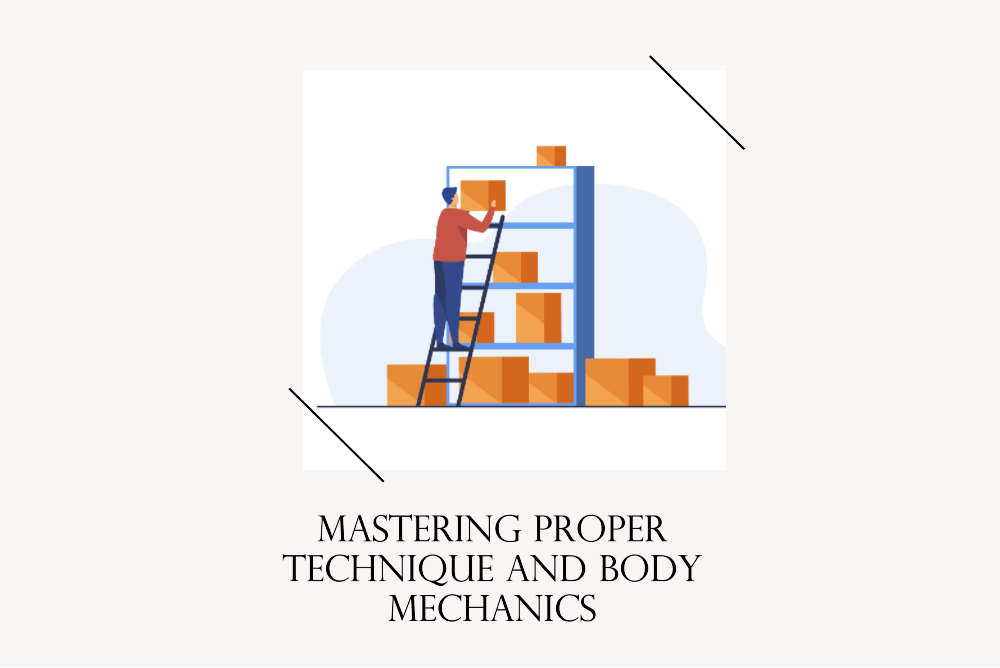
Proper technique is akin to a symphony conductor guiding skilled musicians; it orchestrates movements to minimize stress on vulnerable body structures while optimizing the efficiency of manual handling tasks. By mastering the art of lifting, carrying, pushing, and pulling with finesse, workers can defy the odds, reducing the risk of strains, sprains, and other debilitating injuries.
Central to proper technique is understanding the biomechanics of the human body. Safety professionals delve into the mysteries of anatomical alignment, muscle recruitment, and joint angles to unveil the secrets of injury prevention. Workers learn to engage the right muscle groups, maintain neutral spine alignment, and distribute loads evenly to mitigate the strain on specific body parts.
Body mechanics, like the precise brushstrokes of an artist, enhance the elegance of proper technique. It involves incorporating dynamic movements, such as pivoting and bending at the knees rather than the waist, to minimize torque on the spine. Encouraging workers to adapt their body mechanics to different manual handling tasks enriches their physical versatility, bolstering resilience against injuries.
B.Implementing Effective Manual Handling Training Programs
Effective manual handling training programs metamorphose the abstract concepts of technique and body mechanics into tangible skills that empower workers to conquer the challenges posed by manual handling tasks.
- Comprehensive Assessments: The journey commences with a thorough assessment of the workplace. Safety experts meticulously scrutinize the specific manual handling tasks undertaken, identify potential risks, and analyze the individual needs of workers. These assessments lay the foundation for tailor-made training programs that align with the unique demands of the organization.
- Hands-On Learning: Like a skilled craftsman honing their art, workers partake in hands-on training sessions to develop their manual handling prowess. Interactive workshops, simulation exercises, and practical demonstrations immerse participants in the world of proper technique and body mechanics, fostering experiential learning.
- Cultivating Awareness: Instilling a culture of safety begins with cultivating awareness. Training programs enlighten workers about the consequences of musculoskeletal injuries and the importance of injury prevention. Raising awareness sensitizes the workforce to potential hazards, nurturing a proactive attitude towards safety.
- Reinforcement and Feedback: Learning is an evolving process, and consistent reinforcement is essential for knowledge retention. Follow-up sessions and constructive feedback help workers refine their techniques, ensuring they embed safe practices into their muscle memory.
- Technological Integration: The 21st century ushers in a technological renaissance, and the realm of manual handling training is no exception. Leveraging virtual reality, augmented reality, and interactive digital platforms enriches training experiences, making them engaging and effective.
- Empowering Leadership: Leaders play a pivotal role in shaping the culture of an organization. By actively participating in and advocating for manual handling training, they demonstrate the importance of safety, inspiring their teams to embrace injury prevention as a shared responsibility.
The symphony of effective manual handling training programs harmonizes with the rhythm of the workplace, empowering workers with the skills and knowledge to navigate the challenges of manual handling tasks with grace and precision. As organizations invest in their workforce’s well-being, they sow the seeds of a safer, more resilient future where musculoskeletal injuries become a relic of the past, and the human spirit soars to new heights of productivity and prosperity.
Looking for a Proper training in Manual Handling? If yes, then you can enroll for the training here.
Bursting Myths About Musculoskeletal Injuries
A.Dispelling Misconceptions and Stereotypes
Within the intricate tapestry of workplace safety, myths and misconceptions about musculoskeletal injuries weave a misleading narrative, clouding the understanding of workers and employers alike. Like ancient legends, these falsehoods perpetuate through hearsay and perpetrate unnecessary fears and risks. It is imperative to unravel these myths, casting light upon the truth to foster a culture of informed decision-making and injury prevention.
Myth: “Musculoskeletal injuries only happen to those who perform physically demanding tasks.”
Truth: Musculoskeletal injuries can affect anyone, regardless of their occupation. While physically demanding tasks can contribute to injuries, even seemingly mild manual handling activities can pose risks if proper techniques and body mechanics are not employed.
Myth: “Pain is just a part of the job; workers should tough it out.”
Truth: Pain should never be dismissed as a mere consequence of work. Ignoring pain can exacerbate injuries and lead to long-term damage. Promptly addressing discomfort and seeking proper medical attention are crucial steps in preventing musculoskeletal injuries from becoming chronic and debilitating.
Myth: “Young workers are less prone to musculoskeletal injuries.”
Truth: Age is not a definitive safeguard against musculoskeletal injuries. Young workers may be physically resilient, but they are not immune to strain and injury. Proper training and adherence to safety protocols are essential for all workers, regardless of age.
Myth: “Stretching before work prevents musculoskeletal injuries.”
Truth: While stretching is beneficial for flexibility and warm-up, it alone cannot prevent musculoskeletal injuries. Proper technique, body mechanics, and ergonomic practices are equally critical in injury prevention.
Myth: “Once injured, workers cannot fully recover.”
Truth: With timely medical intervention, proper rehabilitation, and adherence to safety guidelines, many workers can make a full recovery from musculoskeletal injuries. Early detection and appropriate treatment are key to successful healing.
B.Empowering Workers with Accurate Information
Knowledge is the beacon that guides workers through the maze of workplace safety, dispelling myths and illuminating the path to injury prevention. Empowering workers with accurate information cultivates a sense of agency and responsibility, equipping them with the tools to safeguard their well-being.
- Training and Awareness: In-depth training programs, enriched with accurate information, educate workers about musculoskeletal injuries and the factors contributing to them. By understanding the risks, workers can make informed decisions to protect themselves.
- Communication Channels: Establishing open lines of communication between workers and safety professionals fosters a culture of transparency. Workers should feel encouraged to report discomfort, seek clarification, and share their experiences, enabling timely intervention and problem-solving.
- Providing Resources: Employers can provide accessible resources, such as informational brochures and online materials, that educate workers about musculoskeletal injury prevention. These resources reinforce the importance of safety and serve as references for best practices.
- Role Models and Mentors: Workers who have successfully overcome musculoskeletal injuries can serve as role models and mentors. Sharing their experiences and recovery journeys can inspire others to prioritize safety and seek support if needed.
- Regular Updates: The field of workplace safety is constantly evolving, and new research and practices emerge regularly. Employers should ensure that workers receive regular updates and refreshers on injury prevention strategies to stay current with the latest information.
By bursting the myths surrounding musculoskeletal injuries and nurturing a culture of knowledge, organizations create a workforce that is not only informed but also proactive in their pursuit of safety. Armed with truth, workers become the architects of their own well-being, weaving a future where musculoskeletal injuries are but a distant memory, and the workplace thrives on a foundation of accurate information and shared responsibility.
Ergonomic Solutions for a Safe Workplace
A.Equipment and Tools for Injury Prevention
In the quest for a safe workplace, ergonomic solutions emerge as the shining armor, defending workers from the perils of musculoskeletal injuries. Equipping the workforce with specialized tools and equipment tailored to the human form is a powerful step towards injury prevention.
- Ergonomic Lifting Aids: Heavy lifting can be a Herculean task for the human body, but ergonomic lifting aids swoop in as modern-day Titans, easing the burden. Devices such as lifting straps, hoists, and mechanical assists redistribute the weight and minimize strain on workers’ muscles and joints.
- Adjustable Workstations: The human body is as unique as a fingerprint, and adjustable workstations pay homage to this individuality. Ergonomic desks and chairs with customizable height, tilt, and lumbar support options ensure that workers find their ergonomic sweet spot, promoting comfort and reducing the risk of posture-related injuries.
- Anti-Fatigue Mats: Standing for prolonged periods can lead to fatigue and discomfort. Anti-fatigue mats, a cushioning oasis, relieve pressure on the feet and lower limbs, enhancing blood circulation and mitigating strain during standing tasks.
- Ergonomic Hand Tools: Hand tools, like a symphony conductor’s baton, can orchestrate precise movements. Ergonomic handles, grips, and weight distribution reduce the strain on hands and wrists, preventing injuries such as carpal tunnel syndrome.
- Assistive Technology: In the digital age, assistive technology takes center stage, bridging the gap between human capabilities and machine interfaces. Ergonomic keyboards, mice, and voice-activated devices cater to individual needs, promoting comfort and reducing the risk of repetitive strain injuries.
B.Workplace Design Considerations
The canvas of workplace design becomes an artistic palette in the pursuit of a safe and ergonomic environment. Strategic layout and thoughtful considerations transform the workplace into a sanctuary of well-being, where workers can flourish like masterpieces.
- Optimal Layout: A harmonious layout facilitates the seamless flow of tasks and movements. Placing frequently used items within easy reach reduces unnecessary reaching and stretching, minimizing strain on workers’ upper limbs.
- Zoning for Efficiency: Dividing workspaces into zones based on task types ensures that each zone is equipped with the appropriate tools and equipment. Workers can navigate between zones with ease, reducing unnecessary movements and potential hazards.
- Ample Space: A spacious canvas grants workers the freedom to move gracefully. Sufficient space around workstations and pathways prevents crowding and fosters ergonomic movements, curbing the risk of collisions and awkward postures.
- Lighting and Acoustics: The interplay of light and sound is crucial in creating a conducive work environment. Adequate lighting and acoustic control minimize eye strain, fatigue, and distractions, fostering focus and productivity.
- Well-Designed Seating: Chairs, akin to thrones, play a crucial role in worker comfort. Ergonomic seating with proper lumbar support and adjustable features promotes proper posture and reduces the risk of back injuries.
- Green Spaces: Nature’s artwork, green spaces, breathe life into the workplace. Integrating plants and natural elements enhances worker well-being, reducing stress and improving mood.
By adorning the workplace with ergonomic solutions and thoughtful design, organizations transform their environment into a masterpiece of safety and well-being. Each brushstroke of ergonomics and design choices weaves a vibrant tapestry, safeguarding workers from the shadows of musculoskeletal injuries and elevating the workplace into a realm where human potential shines, unencumbered by the burden of preventable injuries.
Strategies for Musculoskeletal Injury Prevention
A.Creating a Culture of Safety
In the grand tapestry of workplace safety, fostering a culture of safety emerges as the masterpiece that weaves together the hearts and minds of the workforce. This intangible yet potent force forms the very foundation upon which musculoskeletal injury prevention thrives.
- Leadership as Champions: Leaders, like virtuoso conductors, set the tempo for the entire orchestra. By prioritizing safety and actively participating in safety initiatives, leaders become champions, inspiring their teams to follow suit. Their commitment sends a resounding message that safety is not a mere slogan but an intrinsic value.
- Communication and Collaboration: The symphony of safety is a collaborative effort. Encouraging open communication channels empowers workers to share safety concerns, insights, and suggestions freely. Safety committees, huddles, and toolbox talks become forums where workers’ voices harmonize with safety professionals’ expertise.
- Recognition and Incentives: Just as applause sustains a performer’s spirit, recognition and incentives nourish a safety culture. Acknowledging safe practices and celebrating injury-free milestones reinforce the value of safety, motivating workers to excel in their pursuit of injury prevention.
- Continuous Training and Education: Safety education is a lifelong journey, akin to a never-ending symphony. Regular training sessions, workshops, and refresher courses keep safety knowledge fresh, enabling workers to stay in tune with the latest practices and developments.
- Reporting and Learning from Near-Misses: Near-misses, like musical cues, can guide the way to safer practices. Encouraging workers to report near-miss incidents without fear of retribution allows organizations to identify potential hazards and rectify them proactively.
B.Integrating Safety Measures into Daily Tasks
True symphonies are not confined to a concert hall; they resonate through daily life. Integrating safety measures into the rhythm of daily tasks ensures that injury prevention becomes an instinctive part of the workplace culture.
- Task-Specific Training: Each task becomes a performance in itself, deserving of unique attention. Providing task-specific training ensures that workers are equipped with the knowledge and skills to handle each manual handling task safely and efficiently.
- Job Rotation and Breaks: Like interludes in music, breaks provide moments of rest and rejuvenation. Implementing job rotation and scheduled breaks reduces the monotony of repetitive tasks, allowing workers to recover and refresh their bodies and minds.
- Pre-Task Assessments: A prelude sets the tone for a performance, and pre-task assessments establish the groundwork for safety. Conducting risk assessments before each task enables workers to anticipate potential hazards and plan accordingly.
- Safety Checklists: In the symphony of safety, checklists act as sheet music, guiding workers through the steps of injury prevention. Providing safety checklists for different tasks ensures that no critical safety measures are overlooked.
- Peer Support and Mentoring: Musicians often form ensembles, supporting and guiding one another. Encouraging peer support and mentoring in safety matters strengthens the sense of camaraderie and ensures that knowledge is passed down through the generations.
- Regular Safety Audits: Like rehearsals that fine-tune performances, safety audits fine-tune workplace safety. Regular audits identify gaps and deviations from safety protocols, enabling organizations to make necessary improvements.
Through the seamless integration of safety into the fabric of daily tasks and the nurturing of a culture where safety is a cherished value, organizations create a symphony of injury prevention. Each worker becomes a virtuoso, playing their part in harmony, and the workplace transforms into a stage where the melody of well-being reverberates, carrying the message that safety is not just a fleeting note but a timeless symphony that enriches lives and sustains the harmony of productivity and prosperity.
The Future of Musculoskeletal Injury Prevention
A.Technological Advancements and Innovations
In the ever-evolving symphony of workplace safety, the future of musculoskeletal injury prevention embraces technological advancements and innovations as a powerful ensemble, playing the notes of progress and harmony.
- Wearable Technology: Like a symphony conductor’s baton, wearable technology orchestrates a seamless fusion of human and machine. Smart exoskeletons and ergonomic wearables provide support and assistance during manual handling tasks, reducing strain and fatigue on workers’ bodies.
- Virtual and Augmented Reality: The future casts virtual and augmented reality as the maestro’s podium, revolutionizing safety training. Immersive simulations enable workers to practice manual handling tasks in a risk-free virtual environment, honing their skills and decision-making abilities.
- Internet of Things (IoT) Integration: The symphony of safety harmonizes with IoT integration. Smart sensors embedded in tools, equipment, and workstations monitor workers’ movements, offering real-time feedback and insights to optimize ergonomics.
- Artificial Intelligence (AI) Solutions: The future of injury prevention welcomes AI as a virtuoso soloist. AI-powered systems analyze vast amounts of data, identifying patterns and trends to predict and prevent potential hazards before they materialize.
- Biomechanical Analysis: Like a refined musical score, biomechanical analysis delves into the intricacies of human movement. Advanced motion-capture technology and 3D modeling enable precise assessments of workers’ actions, guiding the development of customized ergonomic solutions.
B.Anticipating Challenges and Opportunities
As the symphony of musculoskeletal injury prevention progresses, it must face the challenges of an ever-changing world while embracing new opportunities for innovation and improvement.
Challenges:
- Shifting Workforce Demographics: Aging and diverse workforces present unique challenges in injury prevention. Organizations must adapt safety strategies to cater to varying physical capabilities and needs.
- Emerging Technologies’ Risks: As new technologies enter the stage, potential risks and unintended consequences may arise. Striking a balance between embracing innovation and ensuring safety will be crucial.
- Work-Life Integration: The boundary between work and personal life blurs, with remote work and flexible schedules becoming the norm. Organizations must find ways to promote ergonomic practices both in traditional workplaces and home offices.
Opportunities:
- Big Data and Predictive Analytics: Harnessing the power of big data and predictive analytics offers insights into injury patterns and trends, allowing for proactive intervention and tailored injury prevention programs.
- Collaborative Partnerships: Like a symphony of different instruments, collaborative partnerships among safety experts, technology providers, and academia create a harmonious alliance in advancing injury prevention research and solutions.
- Empowering Worker Participation: The future invites workers to become co-creators of safety. Involving workers in the design and evaluation of safety initiatives fosters a sense of ownership and commitment to injury prevention.
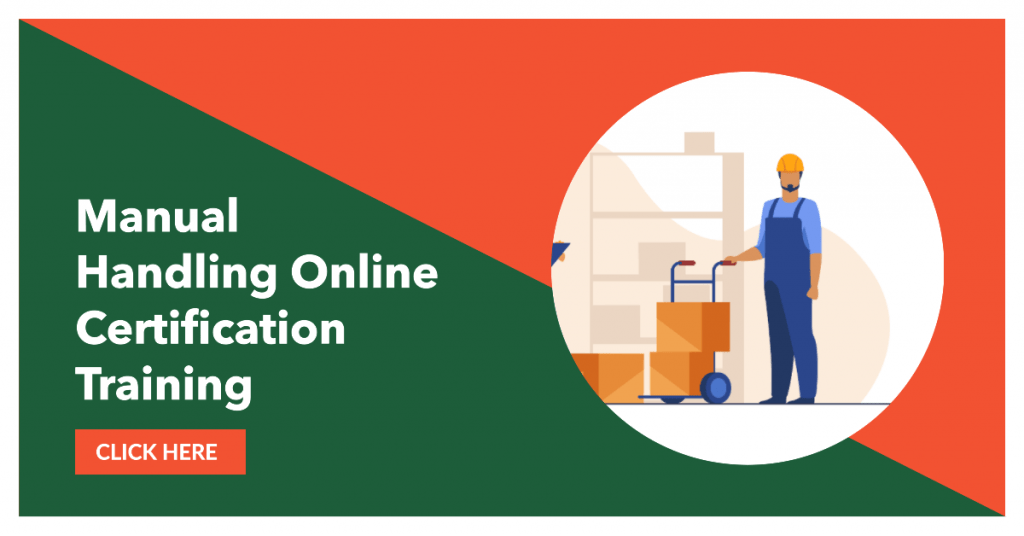
Conclusion
Proactive injury prevention is not just a legal or ethical obligation; it is the cornerstone of a culture that values and cherishes the health of its workforce. By safeguarding workers from musculoskeletal injuries, organizations create an environment where employees feel valued, cared for, and empowered to reach their full potential.
Musculoskeletal injury prevention is not merely an abstract concept; it is a tangible commitment to the well-being of workers and the prosperity of organizations. It is a symphony that harmonizes the forces of knowledge, awareness, technology, and culture, creating an environment where the human form and the demands of manual handling tasks dance in synchrony.
As we embrace the importance of preventing musculoskeletal injuries, we recognize the transformative power of a proactive approach to workplace safety. By fostering a culture that values safety, organizations elevate their workforce’s morale, productivity, and job satisfaction. The symphony of safety is not only a legal obligation but a moral imperative, affirming our dedication to the health and happiness of those who contribute to the success of our endeavors.
Frequently Asked Questions (FAQs)
What are the 4 types of musculoskeletal injuries?
The four types of musculoskeletal injuries are strains, sprains, fractures, and dislocations. Strains involve stretched or torn muscles, while sprains affect ligaments. Fractures are broken bones, and dislocations occur when bones are forced out of their normal positions.
What are the most common musculoskeletal injuries?
The most common musculoskeletal injuries include back strains, ankle sprains, wrist fractures, and shoulder dislocations. These injuries often result from improper lifting, repetitive movements, or accidents during manual handling tasks.
How are musculoskeletal injuries caused?
Musculoskeletal injuries are typically caused by overexertion, improper lifting techniques, repetitive motions, sudden impacts, and poor posture during manual handling tasks. These factors can strain muscles, ligaments, and joints, leading to injuries.
What is MSD in manual handling?
MSD in manual handling refers to Musculoskeletal Disorders, which are injuries or disorders that affect the muscles, tendons, ligaments, nerves, and other soft tissues due to repetitive or strenuous activities at work.
Which part of the musculoskeletal system is most prone to injury in manual handling?
The back and spine are the most prone to injury in manual handling tasks. Poor lifting techniques, bending, and twisting while carrying heavy loads can strain the muscles and structures in the back, leading to strains and sprains.
What are MSD risk factors?
MSD risk factors include repetitive movements, awkward postures, heavy lifting, insufficient rest breaks, and inadequate ergonomics. Factors such as job demands, physical fitness, and age also contribute to the risk of developing musculoskeletal disorders.
What is the first aid for musculoskeletal injury?
For immediate first aid of musculoskeletal injuries, remember the RICE protocol: Rest the injured area, apply Ice to reduce swelling, use Compression to support the injury, and Elevate the affected limb to minimize inflammation.
How can you prevent MSD?
Preventing MSD involves using proper lifting techniques, maintaining good posture, taking regular breaks, using ergonomic equipment, and implementing workplace safety training. Ergonomic assessments and adjustments can also reduce the risk of MSD.
How is MSD diagnosed?
MSD is diagnosed through a combination of medical history, physical examination, and imaging tests like X-rays or MRI scans. A healthcare professional will assess symptoms, pain levels, and range of motion to determine the extent and nature of the musculoskeletal disorder.


